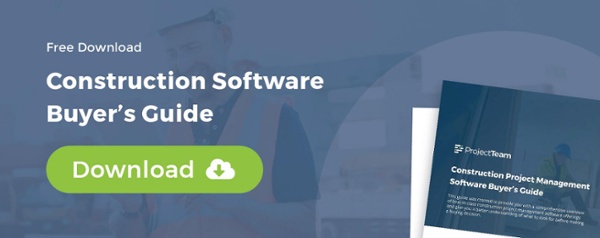Choosing the right construction project management software can make a significant difference in the success of your projects. Many organizations issue a Request for Proposal (RFP) to find the best solution, inviting vendors to demonstrate how their software aligns with your needs. However, crafting an RFP that gathers the right information and asks the right questions is critical to ensuring you make an informed decision. Here’s how to go about it.
Start with Clear Objectives
Before you begin drafting your RFP, defining your organization's goals is essential. What specific problems are you trying to solve with new project management software? Are you aiming to streamline workflows, improve stakeholder communication, enhance reporting, or ensure better document control? Clarifying your objectives will help you tailor your RFP and make it easier to evaluate responses based on how well they address your priorities.
Additionally, consider your long-term goals. Are you planning to scale your operations? Will you need a system that can evolve as your organization grows? These considerations should also factor into the RFP, as flexibility and future-proofing are critical to avoid outgrowing a system too quickly.

Ask the Right Questions
The most effective RFPs ask questions that assess a product’s capabilities and help you understand how well the software fits with your organizational processes. You’ll want to include specific questions around these areas:
-
Core Features: Ask vendors to describe their software's key features and how they align with your organization’s needs. Can the software manage budgets, timelines, and stakeholder communication? How does it handle document control, approvals, and reporting? In addition to core features, leave room for the vendor to describe their differentiators and how those items will benefit your organization.
-
Customization: Ask whether the system allows for custom workflows or forms, whether these customizations can be done internally, or if vendor support is required. Flexibility is essential to tailoring the software to fit your unique processes.
-
Integration: Can the software integrate with your organization's existing tools and systems? If so, how seamless are these integrations? A system that doesn’t play well with your existing infrastructure could cause inefficiencies.
-
Security: Security should be a top priority, especially when handling sensitive data. Depending on your needs, ask vendors about their security protocols, encryption standards, and compliance with regulations such as FedRAMP or GDPR.
-
User Experience: A great user experience can make or break software adoption. Ask vendors about their approach to user training and support. Is the software intuitive? Do they provide robust onboarding and ongoing support?
-
Scalability: Inquire about how the software can grow with your organization. Can it handle larger projects or increase users over time? Understanding scalability is crucial for long-term success.
-
Implementation Timeline and Cost: It’s essential to have a clear picture of how long the implementation will take and what costs are involved, both up-front and long-term. Ask for a breakdown of costs, including licenses, support, and any additional fees for updates or customizations.
Encourage Screenshots and Short Video Demos
While written responses to your RFP are helpful, seeing the software in action is invaluable. Encourage vendors to include screenshots and, ideally, a 15- to 30-minute video demo as part of their proposal. While marketing videos are nice, it's more beneficial to have the vendor screen record sample processes related to your requirements. Screenshots will give you an initial visual understanding of the interface and layout, while a demo video allows you to see how the software functions in real time.
A short demo will clarify how intuitive the system is, how the features work together, and what the overall user experience will be like for your team. It also allows you to evaluate whether the vendor addresses your core needs and how flexible their solution is for your specific processes.
Don’t Forget Usability and Adoption
It’s easy to get caught up in project management software's features and technical specifications, but usability is equally important. Even the most robust software will fall flat if your team struggles to use it. Make sure to ask vendors about user training, ongoing support, and what resources are available to ensure smooth adoption.
Additionally, request information about their user community, forums, or online support resources. An active user community can be a great asset for ongoing learning and troubleshooting, often a key factor in long-term success with any software.
Focus on the Long-Term Fit
Your goal should be to select a software solution that solves your immediate needs and supports your organization in the long term. When reviewing RFP responses, keep an eye on how flexible and future-proof each option is. Does the software allow for easy scaling? Can it evolve with changing technology and industry standards? Is the vendor committed to continuous development and support?
Long-term fit is about more than just features; it’s about ensuring that the software will continue to meet your needs as your organization grows and changes.
Final Thoughts
Creating an effective RFP for construction project management software requires thoughtful consideration of your immediate and future needs. Asking the right questions and requesting visual representations of the software will give you a clearer picture of how each solution stacks up. By focusing on features, integration, usability, and scalability, you can choose software that drives real value for your organization.
Ultimately, the key is finding a solution that meets your current requirements and empowers you to adapt and grow. With a well-crafted RFP, you can confidently choose a platform that helps you manage your construction projects more effectively and efficiently.
